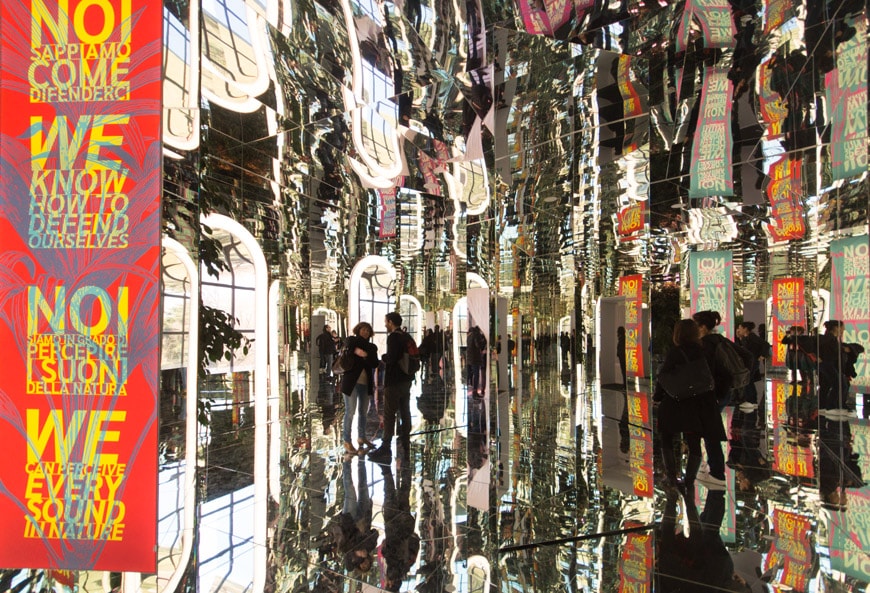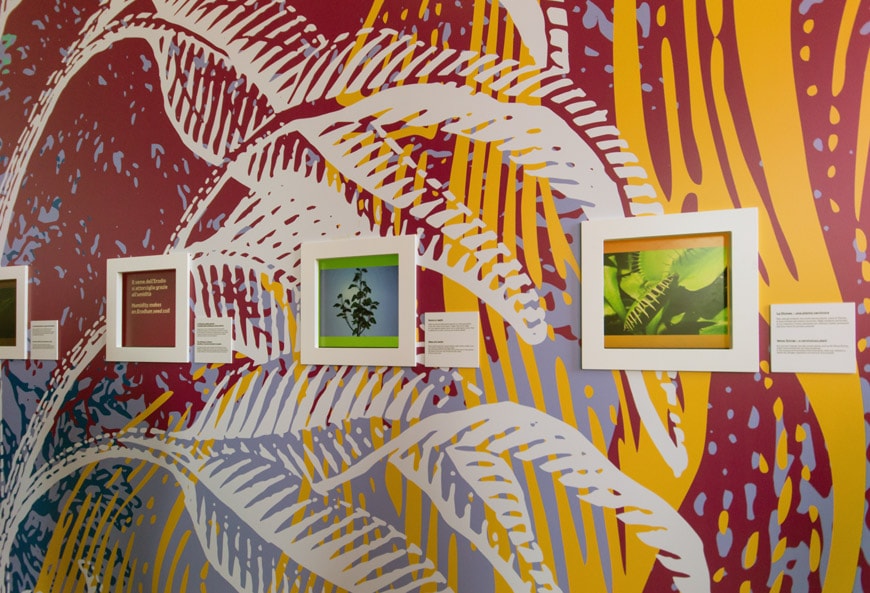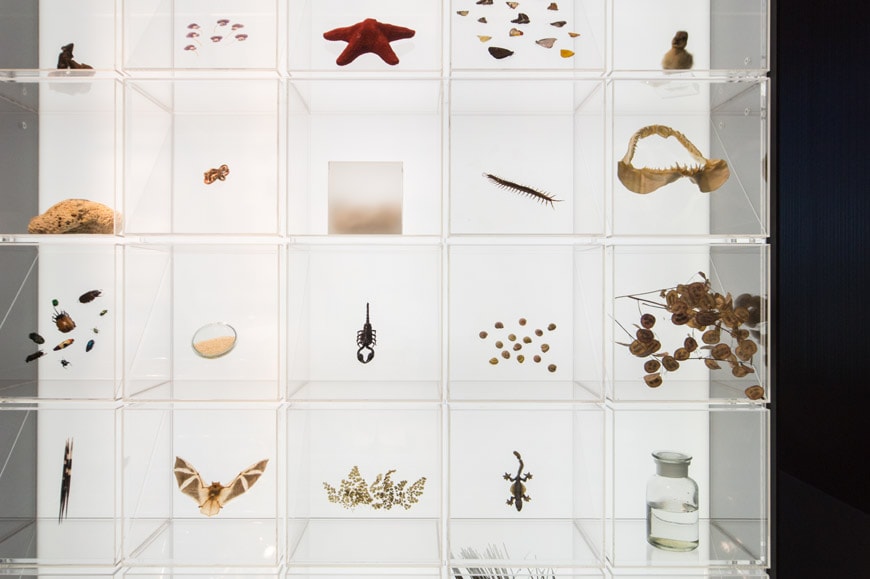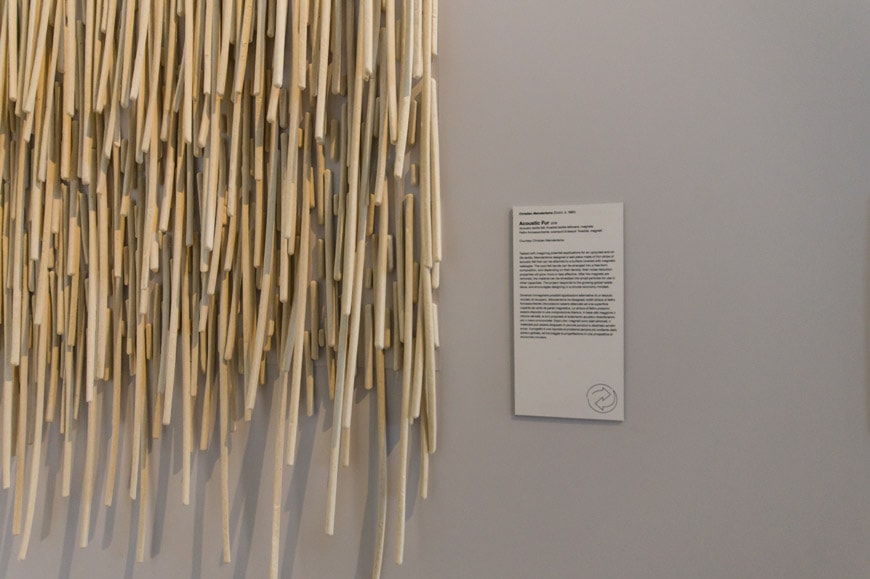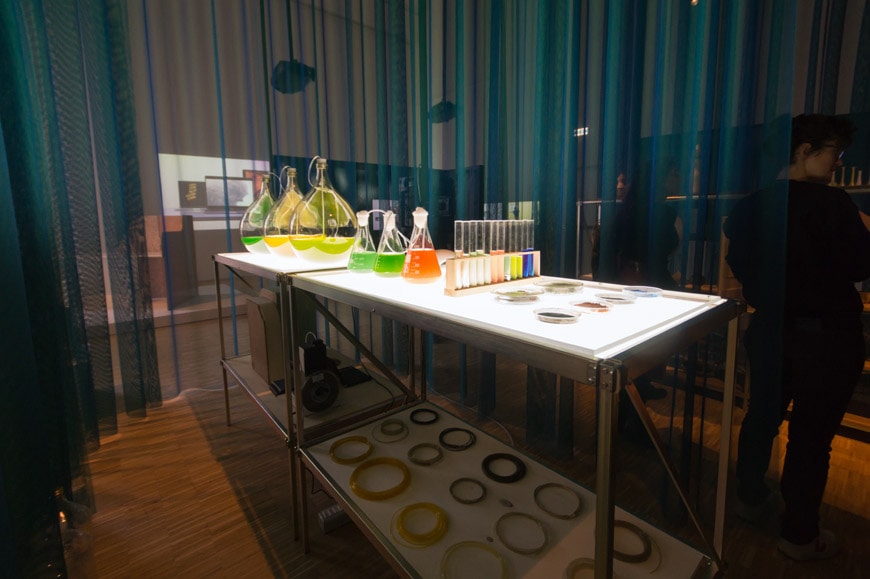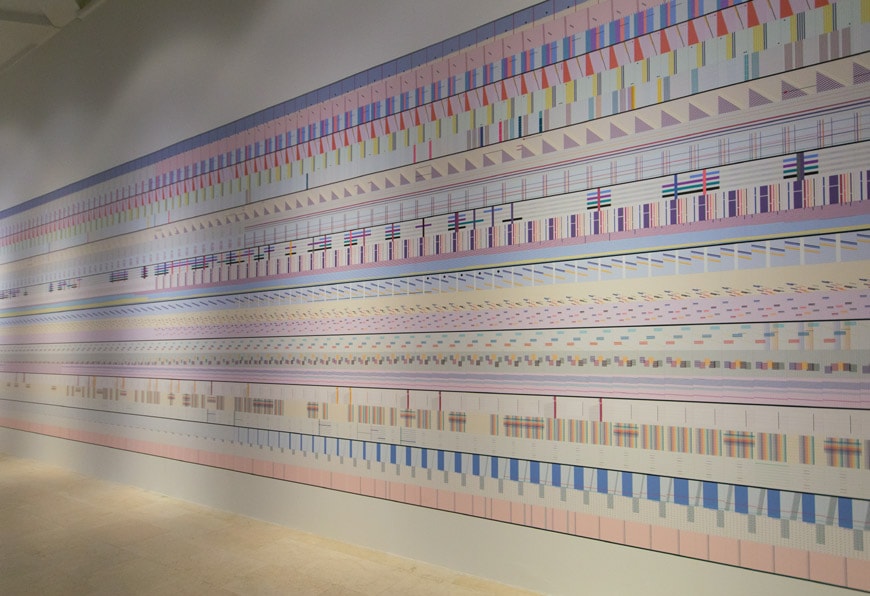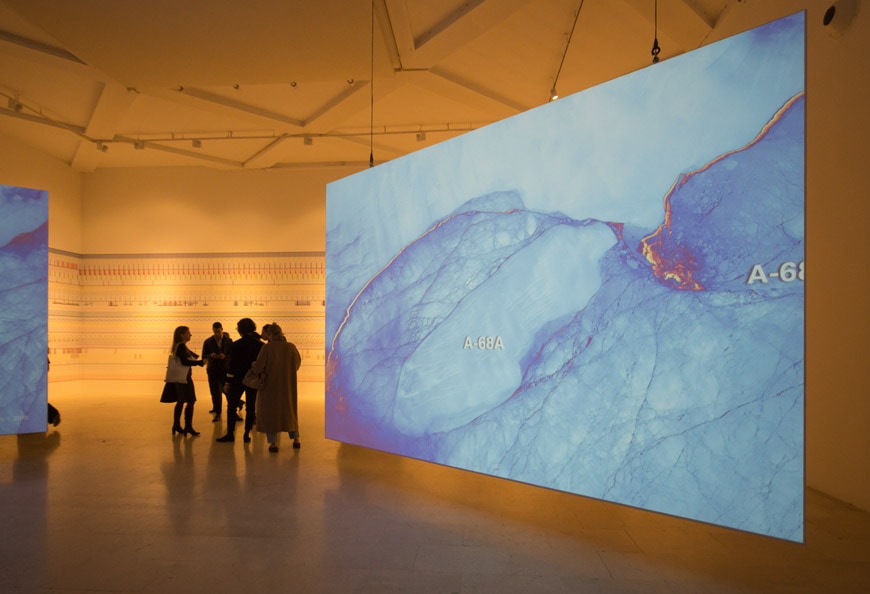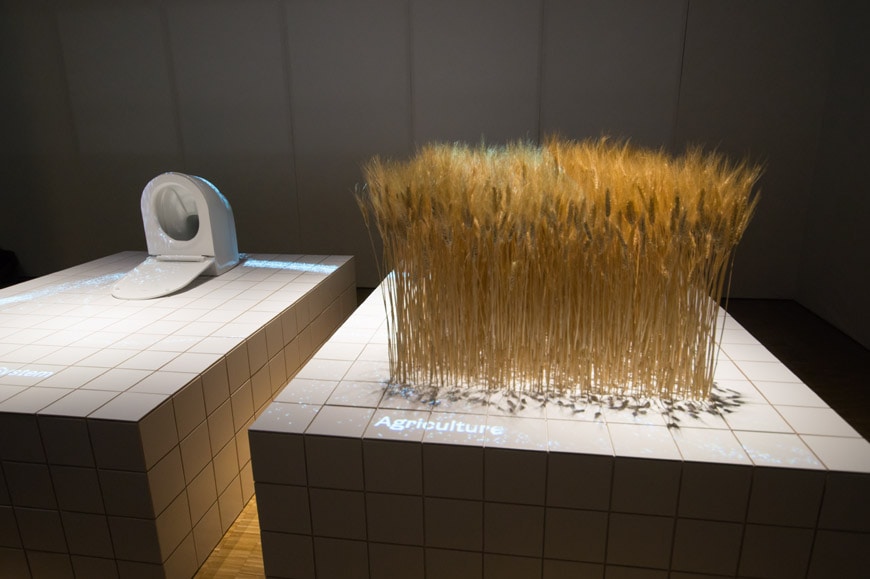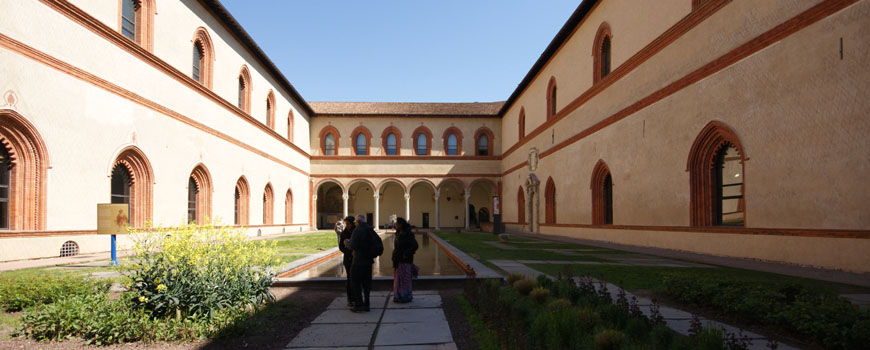‘Broken Nature’. Can design save the world?
Broken Nature: Design Takes on Human Survival
XXII International Exhibition of the Triennale di Milano
Broken Nature: Design Takes on Human Survival
A lush tropical forest; hidden in the foliage, a tiger is looking at us. This picture opens “The Nation of Plants”, the exhibition curated by Stefano Mancuso (one of the highest authorities in Plant Neurobiology) part of “Broken Nature: Design Takes on Human Survival”, the 22nd International Exhibition of the Triennale di Milano.
That image of a forest depicts an important and surprising fact to us, people of the Anthropocene; that 80 percent of the live biomass on Earth consists of plants while animals, including humans, account for just a 3 percent of it.
Starting from those figures, in the exhibition Mancuso develops a simple concept: that one way to avoid a catastrophic future for mankind is to learn from plants; since they have been on this planet for much longer, plants are better adapted than us to it and will probably outlast humans because, during their evolution, they have found highly-efficient, non-predatory, solutions to cope with their ecosystems.
Restorative Design
“Efficient and non-predatory solutions” is the conceptual centerpiece of the 22nd Triennale.
Efficient and non-predatory solutions that curator Paola Antonelli chose among research, projects, experiments, and products capable to heal (when possible) the fracture between humans and the natural environment and grouped under the term “Restorative Design”.
“Broken Nature is aimed to be an investigation into the relationships, now threatened, between humans and the natural environment. By presenting projects of design and architecture, the exhibition explores the concept of restorative design, highlighting objects and strategies, at different scales, which rebuild the relationship between human beings and the context they live in, including social and natural ecosystems”.
In her exhibition opening press conference, Antonelli focused on the importance of becoming more aware of the fragile relationship between human beings and the environment also by the means of our everyday behaviors, for example by learning and promoting a new approach to the objects we use and their life cycle.
For sure, the theme of this year’s Triennale is expansive and ambitious, the quest for a more sound relationship between humans and nature can take many ways and implies global-scale political and economic strategies often controlled by remote “entities” we have no full control over.
The exhibition is not perfect, each of the subjects presented should deserve more space and investigation, and the number and diversity of the works on display require constant attention to don’t lose the thread. Yet, the exhibition has the merit of opening a reflection on an issue we are all involved in, as well as on the role and education of today’s designers.
As Triennale’s President Stefano Boeri said “ Triennale confirms its intention to continue the tradition of this event by connecting it to some of the biggest issues of our time, opening that investigation to the contribution by the international community of design and architecture, and to that by all people who will visit it in the next months”.
I’d like to end with a sentence printed on the exhibition’s introductory panel: “Broken Nature celebrates the revolutionary power of imagination and ingenuity. Even to those who believe that the human species will become extinct in the (near? far?) future, design presents the means to plan a more elegant ending...”
The 22nd Triennale consists of the main exhibition, twenty-two international participations promoted by the Bureau International des Expositions, the installation “The Great Animal Orchestra” created by Bernie Krause and United Visual Artists for the Fondation Cartier pour l’art contemporain, and the special exhibition “The Nation of Plants”, curated by Stefano Mancuso.
The exhibition The Nation of Plants curated by Stefano Mancuso, installation views.
Photos © Inexhibit. (XXII International Exhibition of the Triennale di Milano – Broken Nature: Design Takes on Human Survival)
The Great Animal Orchestra, Bernie Krause, and United Visual Artists, installation views.
Photo © Inexhibit. (XXII International Exhibition of the Triennale di Milano – Broken Nature: Design Takes on Human Survival). The Great Animal Orchestra was created by music composer and bioacoustics expert Bernie Krause and British collective United Visual Artists (UVA) in 2016 after a commission by the Fondation Cartier pour l’art contemporain in Paris.
Água Carioca – Urban Circulatory System in Brazil.
Eva Pfannes and Sylvain Hartenberg of Ooze Architects with Angelo Renna, Sacha Mollaret, Adolfo Estrada Vargas, Dirk Gonzalez Veugelers, Verena Balz, Florian de Visser, Mario Campanella. 2012-19, installation view, photo © Inexhibit. (XXII International Exhibition of the Triennale di Milano – Broken Nature: Design Takes on Human Survival).
A project for modular systems to treat and recycle wastewater in informal settlements in Rio de Janeiro. The project promotes the development of a collective approach to handling water.
Reliquaries, Paola Bay and Armando Bruno. 2018, installation view, photo © Inexhibit.
(XXII International Exhibition of the Triennale di Milano – Broken Nature: Design Takes on Human Survival).
A handful of soil, a drop of pure water, a starfish. The glass case protects and presents them as they were reliquaries for a future time in which they’ll possibly be seen as rare, precious things.
Acoustic Fur, Christien Meindertsma, 2018, installation view, photo © Inexhibit.
(XXII International Exhibition of the Triennale di Milano – Broken Nature: Design Takes on Human Survival). Felt strips from textile leftovers can be used as an acoustic insulation material.
Algae Geographies, Algae Platform, Atelier Luma / Luma Arles with Studio Klarenbeek & Dros, III+1, buro BELÉN, Studio Tjeerd Veenhoven and HuisVeendam, Vera Scaccabarozzi, Inès Bressand and Is Fainas Cooperative, and other contributors. 2019, installation view, photo © Inexhibit. (XXII International Exhibition of the Triennale di Milano – Broken Nature: Design Takes on Human Survival).
The project Algae Geographies has evolved into a transnational platform tapping into the unexplored connections between local, raw biomaterials and the production methods associated with them. The objects on display showcase the wide range of explorations enabled by this research platform: 3D-printed domestic objects made of microalgae and biopolymers; textiles dyed and printed with algae pigments; bio-laminates with algae and starch-based polymer; basketry which draws on cultural archives from the diverse locations where they were produced – Arles, Cairo, Istanbul, and Sardinia.
The Room of Change, Accurat – Giorgia Lupi, Gabriele Rossi, Nicola Guidoboni, Giovanni Magni, Lorenzo Marchionni, Andrea Titton, Alessandro Zotta, 2019, installation views, photo © Inexhibit. (XXII International Exhibition of the Triennale di Milano – Broken Nature: Design Takes on Human Survival).
The texture printed on the tapestry is not simply a decorative pattern but a visual representation of organized data that unveils the huge environmental, climatic, and social changes we are currently experiencing.
NASA’s Images of Change series of satellite photography highlights the transformations our planet has undergone in the past decades due to climate change. With this installation, Accurat questions a communication made only of data and numbers and suggests a change of scale and perspective. Images of Change © National Aeronautics and Space Administration (NASA). 2014-17.
International participations: Austria | Circular Flows – The Toilet Revolution!
Organization: MAK – Museum of Applied Arts, Vienna Curators: Marlies Wirth, Digital Culture curator, MAK.
Urine separation is of greatest significance in urban catchment areas, where wastewater causes large quantities of nitrogen to flow back into the rivers. With a grant from the Bill & Melinda Gates Foundation, Austrian design studio EOOS has developed a toilet that separates 90 percent of the urine nitrogen. photo © Inexhibit.
International participations: the Czech Republic | OUT OF POWER TOWER
Organization: Museum of Decorative Arts, Prague. Curator: Iva Knobloch.
OUT OF POWER TOWER – Krištof Kintera in collaboration with Rastislav Juhás, Josef Frühauf, Richard Wiesner, Matěj Al Ali, Martina Nosková.
A 4.5-meter-high tower made up of used batteries, piled and truncated. From the outside, the electric batteries seduce the visitors with their shiny mosaic of logos while, internally, they reveal their worn-out dark minerals. Out of Power Tower is a metaphor for our era, its external surface looks cozy and comforting but, digging a little deeper, we find a toxic and dangerous core. photo © Inexhibit.
XXII International Exhibition of the Triennale di Milano
Broken Nature: Design Takes on Human Survival
Triennale di Milano
Viale Alemagna, 6 Milan
from March 1 through September 1, 2019
Broken Nature is curated by Paola Antonelli, Senior Curator in the Department of Architecture and Design and Research and Development Director at the Museum of Modern Art in New York.
copyright Inexhibit 2024 - ISSN: 2283-5474


